6 Best Single Stage Reloading Press for Handloading Ammo
Deciding which single stage reloading press (or any kind of press) best suits your needs can be a daunting challenge. With many brands to choose from, various price points, and different functions available, it takes patience and careful research to make the best decision possible.
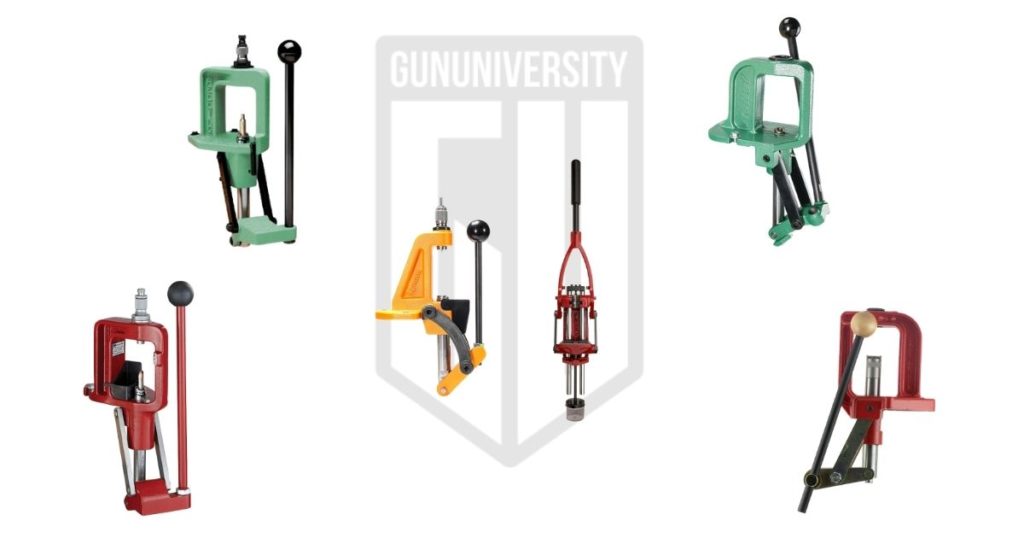
When purchasing a reloading press, you will primarily have 3 different options to choose from:
- Single stage presses
- Turret presses
- Progressive presses
For many people, a single-stage reloading press will be the best route to take, due to its notable advantages: simplicity, lower pricing, and potential for increased accuracy per round. However, progressive reloading presses, which perform multiple operations per pull of the handle, can reload ammo much faster.
So, is a single-stage or progressive reloading press right for you?
If you already know what a single stage press is and you’re sure that it’s the right kind of press for you and you just want to see the best relaoding press for your needs, you can continue on to see the best single stage reloading presses.
However, if you’d like to learn more about what single stage presses are and how they work and whether a single-stage press is right for you, we cover both of those topics in detail at the bottom of this article.
How I Chose the Best Single-Stage Reloading Press
As a former Navy officer and lifelong shooter, I’ve had my hands on a lot of single stage reloading presses, so I know what makes a good one. When putting together this article, I relied on my own experiences and reached out to expert shooters who are familiar with reloading presses. Their input helped me create a list of the best single stage reloading presses out there.
I know that picking a reloading press is a personal choice, and what works for me might not be ideal for you. Everyone has their own preferences. That’s why, even though I’ve ranked these presses from 1 to 6, I made sure the selection caters to different people with different needs. I’ve also included a buyer’s guide to help you know what to look for when you’re shopping for a single stage reloading press.
Best Single-Stage Reloading Presses
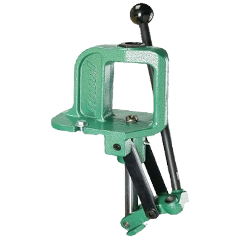 |
| Check Price | |
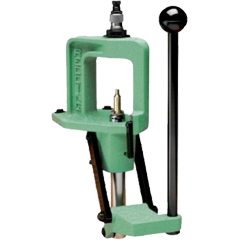 |
| Check Price | |
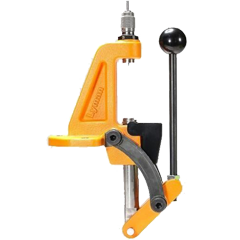 |
| Check Price | |
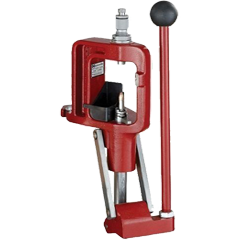 |
| Check Price | |
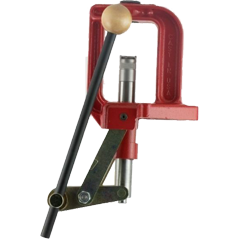 |
| Check Price | |
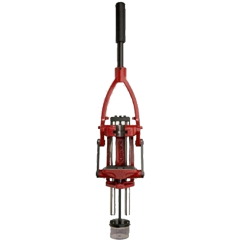 |
| Check Price |
#1 RCBS ROCK CHUCKER SUPREME PRESS
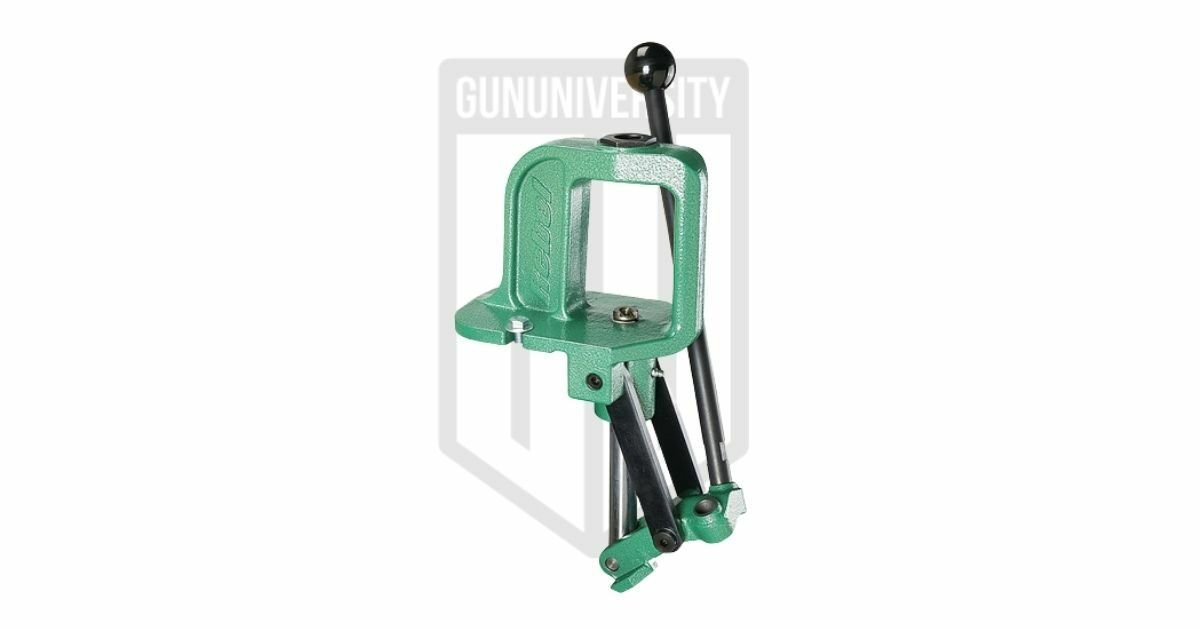
The RCBS Rock Chucker Supreme Press is arguably one of the best single-stage presses on the market right now. With its high-quality control, it can go head to head with some of the most expensive presses on the market (such as the Turban CNC Präzipress).
The Rock Chucker Supreme is made of cast iron instead of solid steel. It comes from the USA. It has a 4.12” load capacity, a built-in swing-bar priming arm, and is listed with an MSRP of $214.
Its ambidextrous design allows you to set it up however you like, ensuring you can reload with the highest quality possible, all without breaking the bank.
The RCBS Summit Reloading Press is another great option from the same company featuring a cast iron frame and all-steel linkage. But it’s not as friendly to newcomers because of its specialized design.
#2 REDDING BIG BOSS II

The Redding Big Boss II is a classic cast-iron, O-frame press built with the highest quality in mind. With very little float in its moving parts, quality materials, and no-mess design, you can be safe knowing that it will churn out high-quality ammunition for years on end.
At an MSRP of $225, that’s considered a worthwhile investment by many.
Its heavy-duty design and handle set up allows for minimal force to be needed while crimping, depriming, and all other steps. Significant leverage means less time working your arm muscles and more time reloading ammo.
#3 LYMAN BRASS SMITH IDEAL PRESS
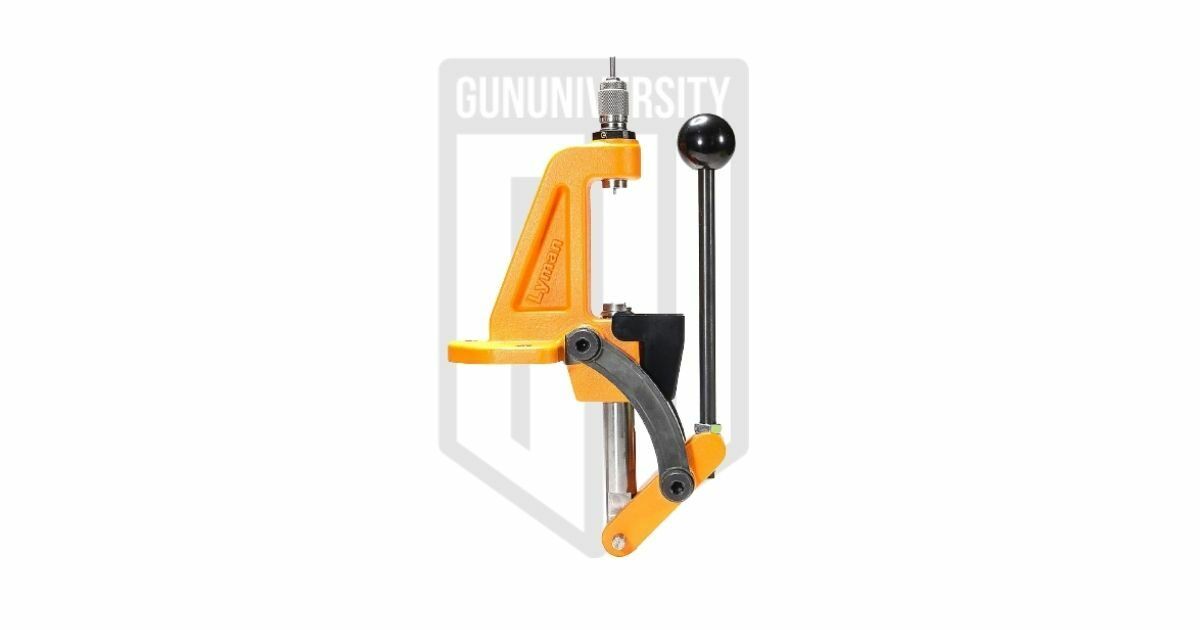
Arguably one of the easiest to use, most straightforward designs, and affordable presses available, the Lyman Brass Smith Ideal Press is a solid choice for our number three single-stage press.
With an ambidextrous handle in the middle of a cast-iron frame, its action is short and sweet, quickly going through all the steps of the reloading process, making it not only a rewarding process, but a fun one as well.
This is a fantastic press for beginners because of its durability and shockingly affordable price of only $122 MSRP.
#4 HORNADY LOCK-N-LOAD CLASSIC RELOADING PRESS
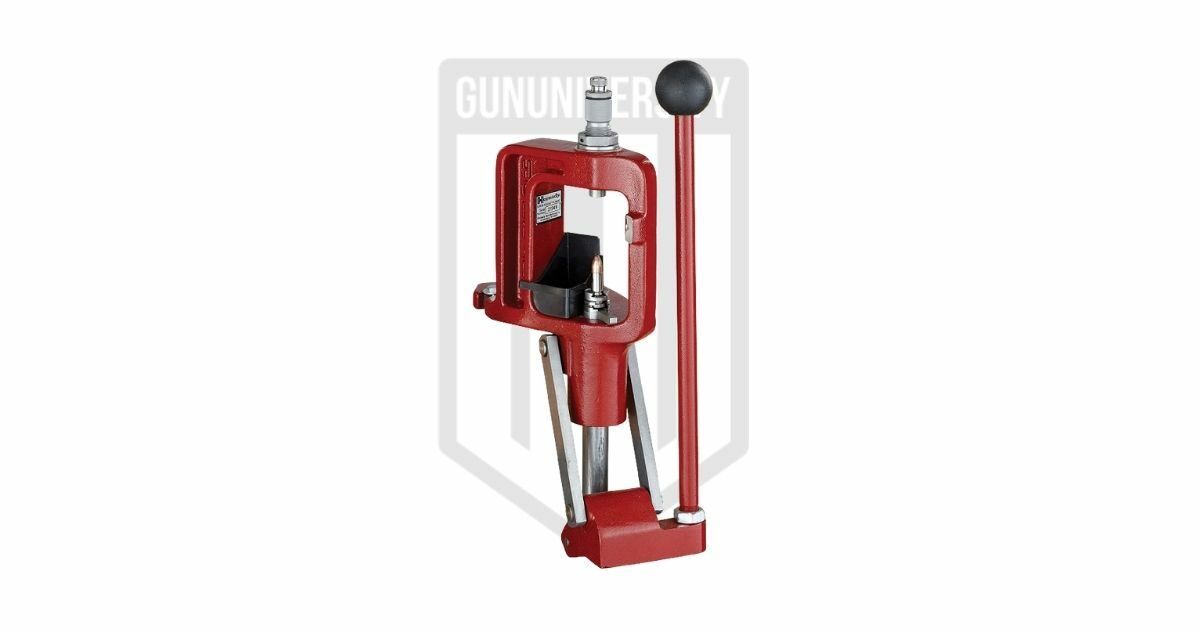
The Hornady Lock-N-Load Classic is a simple yet very effective single-stage press that you should not overlook.
Its cast-aluminum frame is a solid yet lightweight design and includes a removable priming system. However, the biggest thing that stands out here is the lock-n-load system Hornady has engineered.
Usually, whenever you switch out dies while reloading ammo, they are threaded and need to be screwed and unscrewed.
However, with the lock-n-load system, all it requires to lock and unlock the die is a simple ⅛ turn! After that turn is made, just slide the die in or out, and you can quickly move on to the next step in the reloading process.
The lock-n-load system is not limited to just Hornady presses either. It can be used for other compatible reloading press kits from other brands, such as Lee Precision presses, RCBS’s, and others!
#5 LEE CLASSIC CAST 50 BMG
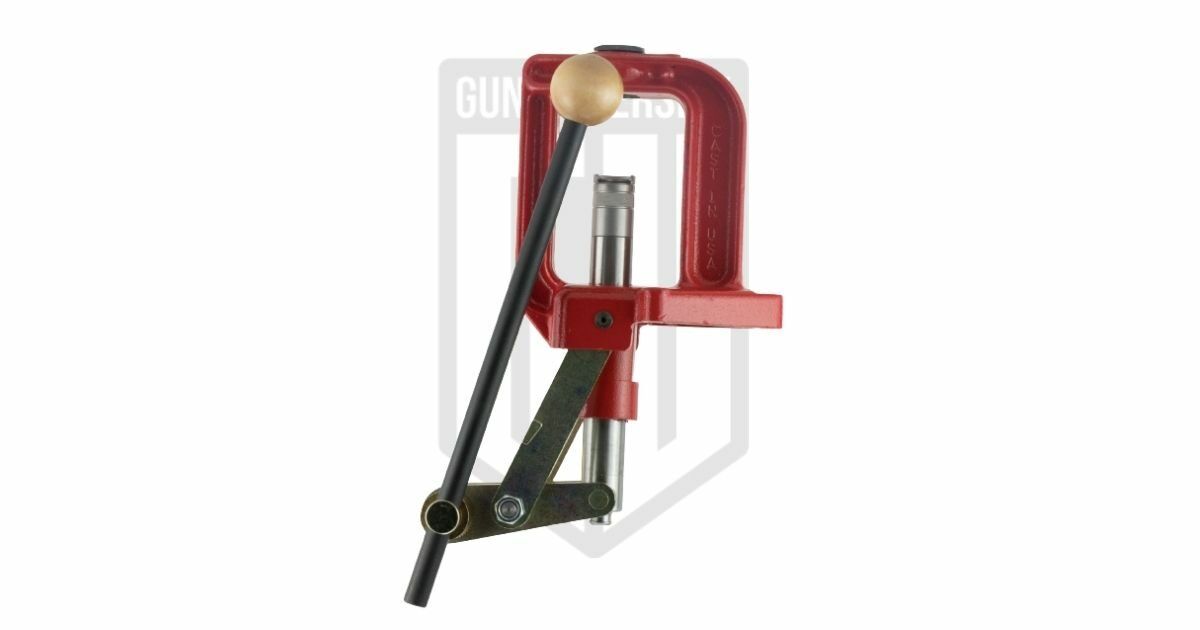
The Lee Precision company has offered several single-stage presses over the years that have been proven to be effective at loading quality ammunition. This, of course, includes the Challenger Press. However, our number five spot goes to the Classic Cast 50 BMG.
Offering all of the same functionalities as the standard Lee Breech Lock Challenger, this one stands out as coming as a complete set (dies included) to be able to reload 50 BMG.
In addition, it can be configured with the appropriate dies to load smaller caliber rounds, such as .223, 30-06, etc. It is also compatible with the Lee Press’ Classic Breech Lock bushing set (which is similar to Hornady’s Lock-n-Load system, in that it twists and locks into the frame).
At an MSRP of $370, which includes everything you will need to reload 50 BMG (including dies), we think this is a fantastic deal that many people would find extremely useful.
#6 FORSTER CO-AX

The Forster Co-Ax single-stage reloading press keeps the reloading process uncomplicated. The Co-Ax is a solidly built press that provides a lot of elbow room because there’s not a frame support or a swinging primer arm that can obstruct your work.
Its dual floating guide rods make sure that you achieve perfect alignment while reloading ammo.
This single stage reloading press has a long life because there is no torque at all on the Co-Ax head. If you’re looking for durability, Forster is a great choice.
It is very popular, so it’s almost always on backorder. With an MSRP of $346, it’s a little on the pricier side.
On the downside, there aren’t as many press accessories available but you really won’t ahve a need for them with this press.
However, the Forster Co-Ax is the gold standard for precision rifle reloading.
WHAT’S OUR FAVORITE SINGLE STAGE RELOADING PRESS?
In the world of reloading equipment, you have several different designs of presses to choose from, including favorites Hornady, RCBS, and Forster.
These presses boast an ease of use that makes them great for beginners and experienced reloaders alike.
(We don’t have to tell you: Always read the reloading manual to ensure your safety and the proper function of the press and the firearm.)
Ultimately though, there can only be one on top, and for us, the best all-around press is the RCBS Rock Chucker Supreme Press. Its superior accuracy for an affordable price is what put it over the top for us. We believe it’s precisely what you’re looking for.
However, if you’d rather have features like quick change dies, go with the Hornady Lock-N-Load. If you’re a serious long-range shooter and want the best in accuracy, the Forster CoAx is on top – if you’ve got an accurate powder charge, you can make perfect ammunition with this one.
However, all six on our list are great presses that we believe will serve you well. And they’re all available from manufacturer websites or on Amazon!
Some honorable mentions that didn’t quute make the cut are the frankford arsenal M press, the lee challenger, and forster products.
Best Single Stage Reloading Press – Buyer’s Guide
Choosing the right single-stage reloading press can be challenging with so many options available. Here’s a straightforward guide to help you make the best choice. I’ll also cover who needs a single-stage reloading press and provide a detailed explanation of how a single-stage reloading press works.
Factors To Consider When Buying a Single Stage Reloading Press
Build Quality: You want something that’s going to last. Look for presses made from tough materials like cast iron or steel. These will stand up to the pressure of reloading and stay reliable for years. A solid build keeps everything aligned and consistent, which is key for making quality ammo.
Ease of Use: No one wants to wrestle with their equipment. Make sure the press is easy to set up and operate. Features like ambidextrous handles or customizable setups can make the whole process smoother. This is especially important if you’re just starting out, but even experienced reloaders appreciate a press that’s easy to use.
Precision and Accuracy: Accuracy is everything in reloading. You need a press that holds everything in perfect alignment and has minimal float. This ensures each round you reload is consistent and reliable, which is crucial whether you’re hunting, target shooting, or competing.
Features and Versatility: Think about what extras come with the press. Some have built-in priming arms, while others might need separate tools. Also, look for systems like Hornady’s Lock-N-Load that let you change dies quickly. These features can save you time and make the press more versatile, handling different calibers and tasks with ease.
Price and Value: Single stage presses range from budget-friendly to high-end. It’s about finding that sweet spot where the press offers great features and durability for the price. Sometimes spending a bit more upfront saves you money in the long run because you won’t need to replace it as quickly.
Maintenance and Support: A press that’s easy to clean and maintain will last longer and perform better. Look for brands with good customer support and warranties. Regular maintenance is crucial for keeping your press in top shape and ensuring safe reloading.
WHO NEEDS A SINGLE STAGE RELOADING PRESS?
Single-stage reloading presses are excellent choices for many different people, from budget-minded folks to people who desire simple design and high functionality, and even competition shooters who need as much accuracy as they can get.
These are great for both beginners getting into reloading and professionals that demand perfect ammunition.
If you are a high-volume shooter, you may want to invest in a more expensive and more complicated progressive press, which has the capability to quickly crank out a lot more ammo.
However, if you’re looking for something simple and working with a handgun (revolver or ACP) or rifle, a single-stage press is a great place to start. Also, if you’re looking to reload for the best accuracy possible, a good single stage press is the ticket.
Single stage presses are the slowest and simplest type of reloader, able to turn your workbench into a professional-grade reloading station. If you’re just starting out, don’t plan to load thousands of rounds in one sitting.
Looking to tailor a specific load for accuracy? A single-stage press is for you.
A turret reloading press still works one round at a time, but allows manual indexing from one type of die to another super fast. These are a bit more complicated but they can save time switching out dies. Although some people like these, we recommend either getting a single stage or a progressive.
A progressive reloading press works multiple rounds at the same time. One turn of the crank might mean a progressive press is resizing casings, replacing primers, dropping powder, crimping edges of the casings, etc. Progressive presses are meant for high-volume reloading (thousands of rounds in one sitting). It’s also more expensive and complicated than the other two types.
A bit of a hyprid press is the turret press because it can perfomr more tha one operation at a time but it still gvies some more consistency clsoer to a single stage press.
HOW DOES A SINGLE STAGE RELOADING PRESS WORK?
Here’s a step-by-step guide on how a single stage reloading press works:
1. CLEAN YOUR CASE
When you go to reload your ammo, you’ll start with an empty case, which needs to be cleaned. These casings should have a spent primer located on their bottom side.
2. CONNECT YOUR DEPRIMING DIE
Screw in or slide in a depriming die into the press. In most cases, this die will also resize your brass. You will need to adjust the die to the correct setting the first time you use it.
3. INSERT YOUR CASE
Insert the case into the shell holder. If you’re loading rifle cases, you’ll need to ensure the case is properly lubed. With pistol brass and good dies, you can skip the lube.
4. PUSH CASING INTO DIE
Use the handle to push the casing up and into the die. This removes the spent primer and restores the casing to its original dimensions. The spent primers can be collected into a primer catcher for easy cleanup. Spent primers are usually toxic (unless it is specifically lead-free). Gather and dispose of them.
5. INSERT PRIMER INTO PRIMER ARM
As you move the case back down, insert a new primer into the primer arm if your press has one. The priming arm is usually permanently attached to the frame design. However, for some presses, you’ll need to prime the cases with a seperate tool.
6. PUSH PRIMED CASING THROUGH
Insert the newly primed casing into the powder thru/expanding die. This die is used to load new gunpowder into the casing and, in some calibers, flare the top of the casing, allowing for easy insertion of the bullet in the next step.
7. FILL WITH POWDER
While the case is still inserted into the die, use a powder measure scoop to retrieve the necessary amount of gunpowder, and then pour it into the die, ending up inside the once empty casing. You can also add powder to multiple cases at once in a reloading tray. Double check that the case has powder in it before proceeding. A case with no powder can be dangerous since the primer might be enough to lodge the bullet in your barrel. Firing another round after a powderless case can make your firearm explode.
8. SEAT YOUR BULLET
Now it’s time to use the bullet seating die. Once you place a new bullet onto the top of the casing, push it into the die. Seat the bullet to the appropriate depth, and make sure it’s straight. This die may also crimp the case slightly to hold the bullet in place. This will depend on the particular caliber and use.
9. CRIMP AS NEEDED
If your bullet seating die doesn’t crimp the case and you’d like a crimp (not always needed), then the final step is to use the factory crimp die. Crimping the casing to the bullet ensures that the bullet stays in place. You don’t want the bullet to be pushed back into the case during loading (semi-auto firearms) or fall out under recoil (magnum revolvers).
And that’s it! You now have a completed, ready-to-fire bullet! If you plan to do this for multiple calibers, or on a regular to frequent basis, there are a couple things to consider in regards to the dies:
- Many reloading dies come in die sets of the same caliber. If the dies are made for different calibers, they will not be usable during your reloading process.
- Depending on the model you choose, it might be beneficial to look into quick change bushing systems or quick change die systems. These allow you to change the die you’re using from one step to another — without having to screw them in and out of the O-frame’s top.
If you are interested in learning more about the reloading process, Gun University has you covered. We offer helpful articles on:
- Best reloading scales
- Best progressive reloading presses
- Best turret presses
- Best reloading dies
- Best case trimmers
- List of gun reviews
Best Single Stage Reloading Press – FAQs
Are single-stage reloading presses suitable for beginners?
Yes, single-stage reloading presses are suitable for beginners due to their straightforward design, ease of use, and affordability. If you’re just starting out, presses like the Lyman Brass Smith Ideal Press are particularly recommended for their user-friendly features.
Can a single-stage reloading press handle multiple calibers?
Yes, you can use a single-stage reloading press for multiple calibers, but you’ll need to change the dies for each caliber. Quick-change die systems like Hornady’s Lock-N-Load make switching between different calibers easier and faster.
Can a single-stage reloading press be used for high-volume reloading?
While single-stage reloading presses can handle high-volume reloading, they are slower compared to turret or progressive presses. If you’re planning to reload large quantities of ammo regularly, a turret or progressive press would be more efficient.
Can I use a single stage reloading press for other types of ammunition?
Yes, you can use a single-stage reloading press for reloading various types of ammunition, including handgun rounds, shotgun shells, and other rifle cartridges. However, these presses are particularly well-suited for precision rifle ammo due to their meticulous nature and focus on precision.
Recent Posts
December 15, 2025
December 15, 2025
December 12, 2025
December 12, 2025

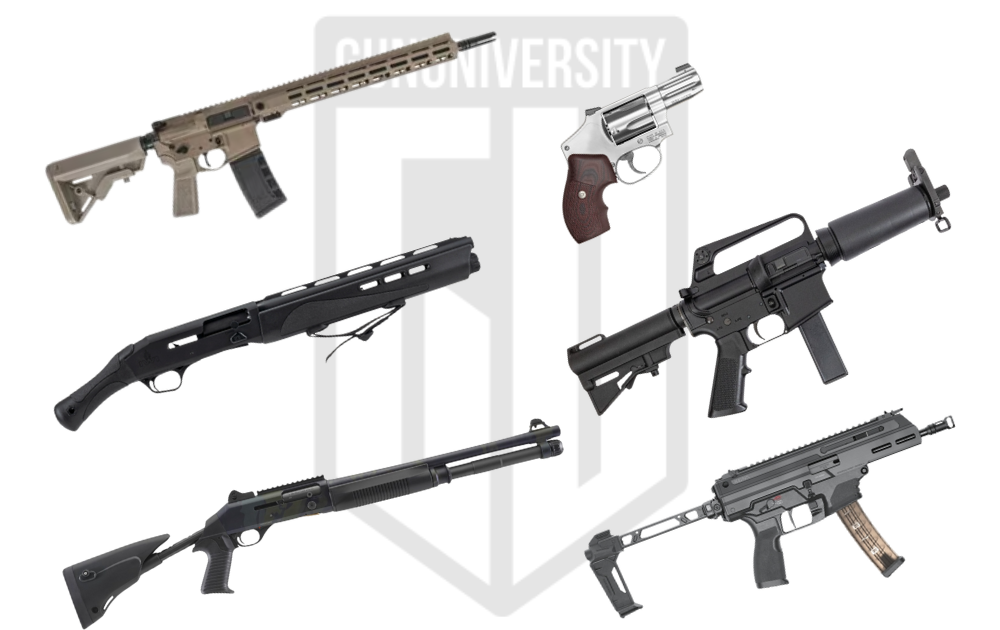
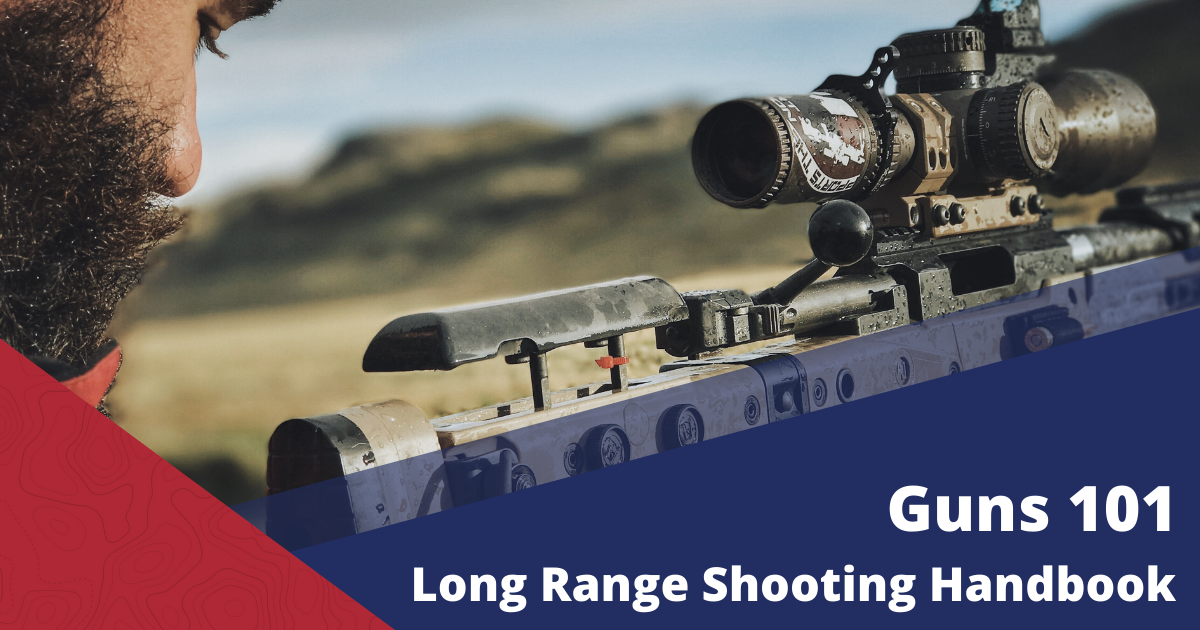
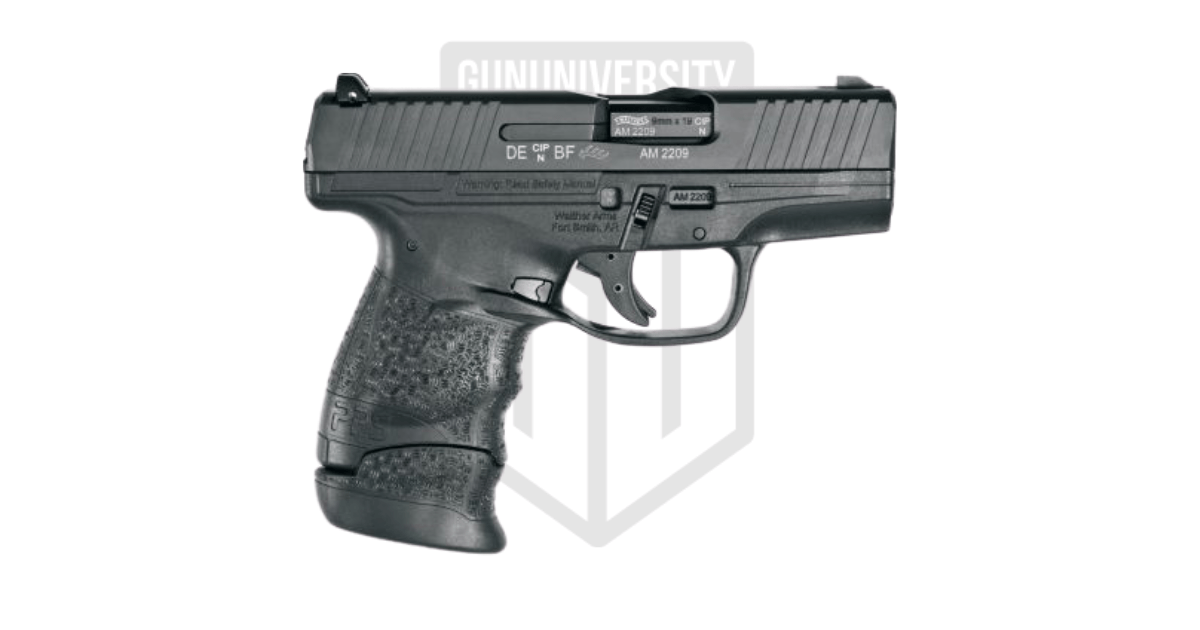
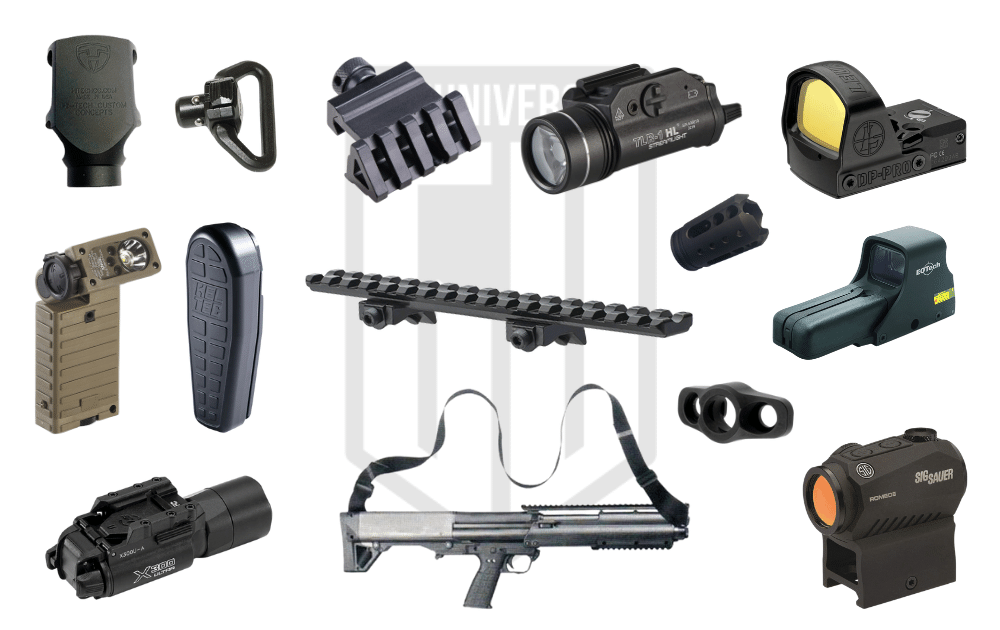
Nice comparison.
I enjoyed the article but I had a bad experience with the Hornady classic lock and load. After two years and approximately 1500 rds of various calibers the bushing got sloppy and was allowing vertical movement of the die. I never did like the cam over action. I called hornady and was caught off guard by the very poor customer. Called back in the next couple of days and talked with Mindi. I got a completely different response. She apologized and sent me the replacement parts. During that down time I bought a MEC marksman which I love.
Gun University – FYI that photo above the ‘Rock Chucker Supreme’ is actually the Rebel press. The difference is that the Rock Chucker has an offset cut out on the lever side of the vertical support and the Rebel does not and also sports the zerk fitting as shown. It’s not actually a bad mistake because in my honest opinion the Rebel is a slightly better press, heavier, beefier, and slightly larger case opening.